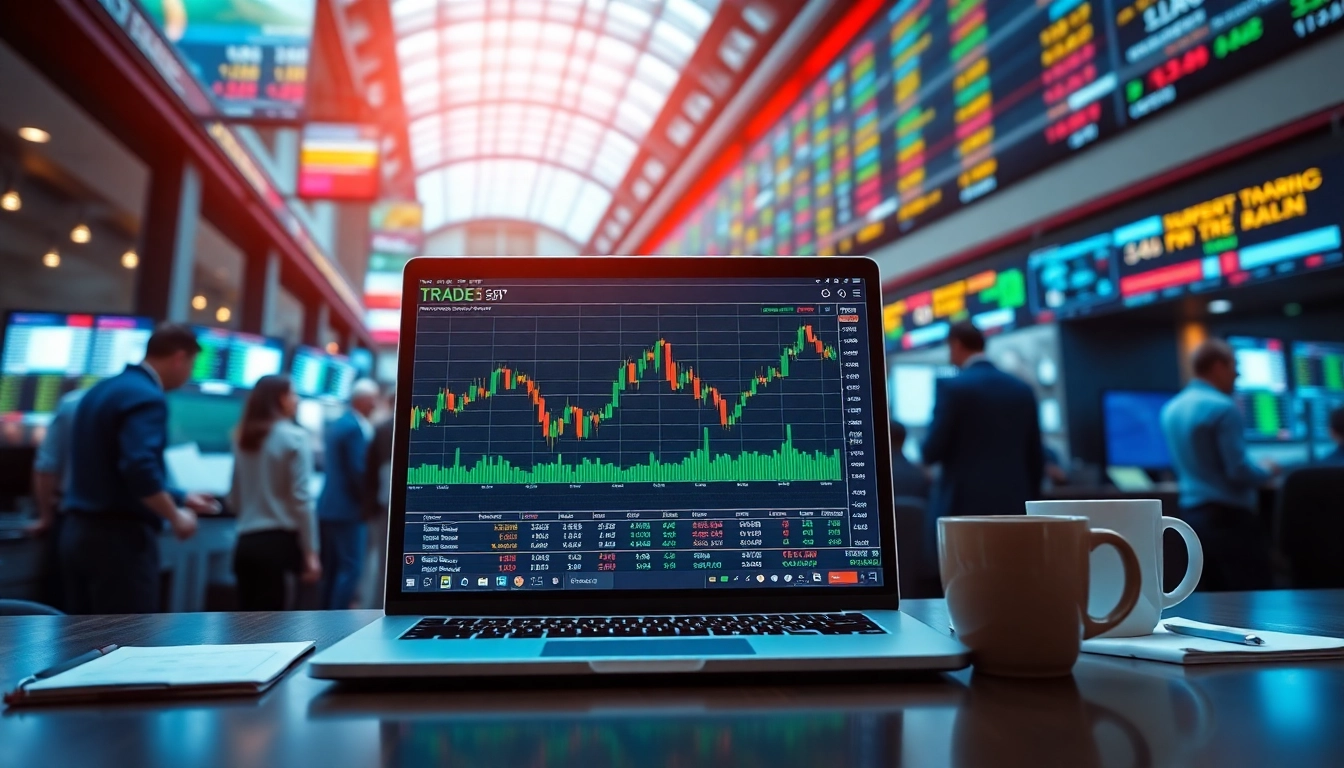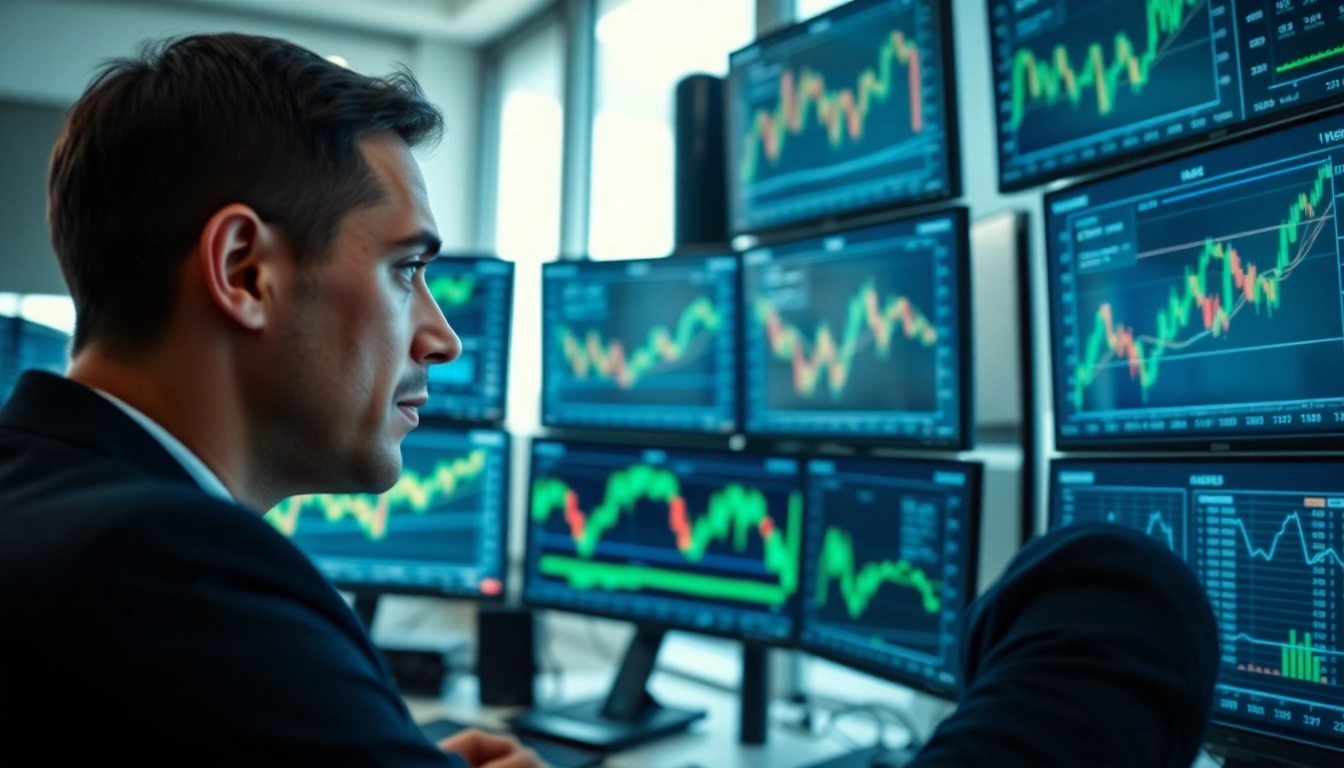
1. Introduction to Trade Futures
In the world of finance, understanding the intricacies of trading instruments is crucial for both seasoned investors and newcomers. One of the essential areas in trading is the concept of futures contracts—financial derivatives that allow the buyer and seller to agree on the price of an asset to be delivered at a specified future date. The opportunity to trade futures is alluring to many due to the unique risks and rewards associated with these contracts. This article delves into the foundational concepts of trade futures, guiding readers through the essentials, including strategies, risks, and the future of this trading facet.
1.1 What Are Trade Futures?
Futures are standardized contracts to buy or sell assets at a predetermined price at a specified future date. They are primarily used for hedging risk or speculation in financial markets. Futures contracts can be based on various underlying assets, such as commodities, currencies, and stock indexes. For instance, a farmer might sell a futures contract on wheat to lock in a price before harvest, while an investor might use oil futures to bet on future price movements in energy markets.
1.2 Key Terminologies in Futures Trading
To navigate futures trading effectively, it’s essential to familiarize oneself with certain terminologies that frequently emerge. Here are some key terms:
- Contract Size: This defines the quantity of the underlying asset in a futures contract.
- Expiration Date: The date when the contract expires, after which trading ceases.
- Margin: The amount of money required to open and maintain a leveraged position in the market.
- Settlement: This refers to the process of fulfilling the contractual obligations, either by physical delivery of the asset or cash settlement.
1.3 The Importance of Trade Futures in Financial Markets
The significance of trade futures lies in their ability to provide a mechanism for price discovery and risk management in financial markets. They allow participants to hedge against price fluctuations, which is particularly useful for businesses reliant on commodities. Additionally, futures trading contributes to market liquidity, enabling traders to enter and exit positions efficiently. This liquidity is essential for maintaining stable markets, especially during times of economic uncertainty.
2. How to Trade Futures: A Step-by-Step Guide
2.1 Choosing the Right Futures Broker
The first step in trading futures is selecting a broker that aligns with your trading goals. Consider factors such as commission fees, trading platform usability, customer service, and available educational resources. Many brokers offer different tools designed for futures trading, which can enhance your trading experience and help you make more informed decisions.
2.2 Setting Up Your Trading Account for Futures
Once you have selected a broker, you’ll need to set up a trading account. This generally requires completing a registration process that includes providing personal information, identity verification, and funding your account with sufficient capital to meet margin requirements. It’s essential to ensure your account is properly funded and configured to start trading comfortably.
2.3 Analyzing Market Trends for Successful Trades
Successful futures trading relies heavily on analysis. Traders typically employ two primary methods: fundamental analysis, which examines economic indicators affecting the assets, and technical analysis, which utilizes historical price patterns and trading volumes to predict future movements. Understanding market trends brings valuable insights that enable traders to make profitable decisions.
3. Types of Futures Contracts to Consider
3.1 Commodity Futures: An Overview
Commodity futures contracts are agreements to buy or sell a quantity of a specific commodity at a predetermined price. Common commodities traded as futures include agricultural products such as wheat, corn, and soybeans, as well as energy products like crude oil and natural gas. Investors leverage these futures to hedge against price changes in the commodity markets or speculate on price fluctuations.
3.2 Financial Futures Explained
Financial futures are contracts based on financial instruments, such as stock indexes, interest rates, and currencies. These are critical for managing risk in the financial markets. For example, S&P 500 futures allow investors to hedge against potential downturns in the stock market, while Eurodollar futures help in managing interest rate risks. Understanding their dynamics is vital for anyone seriously considering futures trading.
3.3 Comparing Futures and Options: What’s the Difference?
Both futures and options are derivatives, but they operate differently. In a futures contract, both parties are obligated to fulfill the agreement at the specified future date, while an options contract gives one party the right, but not the obligation, to engage in the trade. This fundamental difference causes variations in risk profile, potential return, and trading strategies employed by traders in either market.
4. Risk Management Strategies in Futures Trading
4.1 Understanding Leverage and Margin
Leverage is a double-edged sword in futures trading. It allows traders to control a larger position than their initial investment, but it also amplifies potential losses. Understanding how leverage works in conjunction with margin requirements is crucial. Traders must maintain a minimum balance (margin) in their trading account, which allows them to absorb some losses without triggering a margin call from their broker.
4.2 Setting Stop-Loss Orders Effectively
To mitigate losses while trading futures, it’s advisable to use stop-loss orders. A stop-loss order automatically sells a futures contract once the price reaches a specified level. This limits potential losses but can also prevent trades from running into larger losses due to sudden market movements. It’s crucial to set reasonable stop-loss levels based on your risk tolerance and market analysis.
4.3 Diversification within Trade Futures
Diversification is a powerful risk management strategy that involves spreading investments across various assets. In the context of futures trading, this could mean holding contracts across different commodities or financial instruments. Diversifying can lower the overall risk profile of a trading portfolio by offsetting the impact of adverse price movements of any single asset.
5. The Future of Trade Futures: Trends and Predictions
5.1 How Economic Indicators Impact Futures Trading
The futures market is highly sensitive to economic indicators such as GDP growth, unemployment rates, interest rates, and inflation. Changes in these indicators can affect supply and demand dynamics, thereby influencing futures prices. For instance, reports of rising unemployment may lead to lower consumer spending, impacting commodity prices like oil and agricultural goods.
5.2 Technological Innovations in Futures Trading
Technology continues to play a significant role in shaping the futures market. Algorithmic trading, artificial intelligence, and machine learning are becoming increasingly prevalent in futures trading, allowing for more sophisticated analyses and quicker decision-making. These technological advancements can create more opportunities for traders but also increase competition and the necessity for ongoing education.
5.3 Preparing for Future Market Volatility in Trade Futures
The future of trade futures will likely be characterized by increased market volatility, driven by geopolitical tensions, economic uncertainties, and rapid technological changes. Traders should prepare by continually assessing their risk management strategies, staying informed about market trends, and being willing to adapt to changing environments. Flexibility in approach and strategy will be key as traders navigate the complexities of the futures markets ahead.








